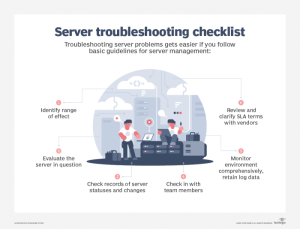
Dive into the world of computer security vulnerabilities with a guide on how to detect them and protect yourself in today’s digital landscape. Get ready for an eye-opening journey filled with insights and tips to safeguard your devices!
Mobile Computing

Mobile devices have become an integral part of our daily lives, allowing us to stay connected, productive, and entertained on the go. However, with the increasing reliance on mobile devices, they have also become prime targets for cyber attacks and security vulnerabilities.
Common Vulnerabilities in Mobile Computing
- Outdated Operating Systems: Failure to update the operating system can leave devices vulnerable to known security threats.
- Unsecured Wi-Fi Networks: Connecting to public Wi-Fi networks without encryption can expose sensitive data to hackers.
- Malicious Apps: Downloading apps from untrusted sources can lead to malware infections and data breaches.
- Phishing Attacks: Users may fall victim to phishing scams through SMS messages, emails, or fake websites, compromising their credentials.
Importance of Securing Mobile Devices
Securing mobile devices is crucial in today’s digital age to protect personal information, financial data, and sensitive work-related content. A compromised mobile device can lead to identity theft, financial loss, and reputational damage.
Computer Security

Computer security is a critical aspect of protecting sensitive information and ensuring the integrity of systems. Detecting vulnerabilities in computer security is essential to identify weaknesses that could potentially be exploited by malicious actors. By proactively identifying and addressing these vulnerabilities, organizations can prevent security breaches and data leaks that could have severe consequences.
Significance of Detecting Vulnerabilities
- Regularly scanning systems for vulnerabilities helps in identifying potential entry points for cyber attacks.
- Addressing vulnerabilities promptly can prevent unauthorized access to sensitive data.
- Enhances overall security posture by proactively identifying and mitigating risks.
Potential Risks of Unaddressed Security Vulnerabilities
- Exposure of sensitive data to unauthorized parties, leading to data breaches.
- Compromised system integrity, resulting in loss of data or system control.
- Potential financial losses due to security incidents and regulatory fines.
Best Practices for Maintaining Computer Security
- Regularly update software and applications to patch known vulnerabilities.
- Implement strong password policies and multi-factor authentication to enhance access control.
- Conduct regular security assessments and penetration testing to identify and address weaknesses.
- Train employees on cybersecurity best practices to reduce human error risks.
- Implement network segmentation and access controls to limit the impact of potential breaches.
Computer Software
Software vulnerabilities are weaknesses in computer programs that can be exploited by attackers to gain unauthorized access, steal data, or disrupt operations. These vulnerabilities can be due to coding errors, design flaws, or outdated software versions.
Examples of Software Vulnerabilities
- Heartbleed: A vulnerability in the OpenSSL encryption library that allowed attackers to steal sensitive information, such as passwords and encryption keys, from servers.
- WannaCry: A ransomware attack that exploited a vulnerability in the Windows operating system to spread across networks and encrypt files, demanding payment for decryption.
- Shellshock: A vulnerability in the Unix Bash shell that allowed attackers to execute arbitrary commands on vulnerable systems.
Role of Software Updates
Software updates play a crucial role in mitigating security risks by patching known vulnerabilities and improving the overall security posture of the system. Regularly updating software ensures that the latest security fixes are applied, reducing the chances of exploitation by cybercriminals.
Computer Systems
Computer systems consist of various components that can be susceptible to vulnerabilities, posing a risk to overall cybersecurity. These vulnerabilities can be exploited by malicious actors to gain unauthorized access, steal sensitive information, disrupt operations, or cause damage to the system.
Components Susceptible to Vulnerabilities
- Operating System: Vulnerabilities in the OS can allow attackers to execute arbitrary code, escalate privileges, or perform denial of service attacks.
- Network Interfaces: Weak network configurations or outdated protocols can be exploited by hackers to intercept data or launch man-in-the-middle attacks.
- Applications: Flaws in software applications can be exploited to gain access to the system or manipulate data.
- Hardware Components: Vulnerabilities in hardware devices such as routers, switches, and servers can be targeted to compromise the entire system.
Impact on Cybersecurity
- Vulnerabilities in computer systems can lead to data breaches, financial losses, reputational damage, and legal consequences for organizations.
- Exploitation of system vulnerabilities can result in unauthorized access, data theft, system downtime, and disruption of critical services.
- Failure to address system vulnerabilities can weaken overall cybersecurity posture and make the system more susceptible to cyber attacks.
Vulnerability Assessment Methods
- Penetration Testing: Conduct simulated cyber attacks to identify vulnerabilities and assess the effectiveness of security controls.
- Vulnerability Scanning: Use automated tools to scan the system for known vulnerabilities in software, configurations, and network devices.
- Security Audits: Evaluate the system against security best practices, compliance requirements, and industry standards to identify potential weaknesses.
- Regular Patching: Keep systems up to date with security patches and updates to address known vulnerabilities and mitigate risks.
Computer Technology
Computer technology continues to evolve at a rapid pace, impacting how security vulnerabilities are detected and addressed in various systems. With advancements in hardware and software capabilities, the detection of vulnerabilities has become more complex and challenging.
Role of Artificial Intelligence
Artificial intelligence (AI) plays a crucial role in identifying and addressing security vulnerabilities in computer systems. AI algorithms can analyze vast amounts of data to detect patterns and anomalies that may indicate a potential vulnerability. By automating the process of threat detection, AI can help cybersecurity professionals stay ahead of emerging threats and vulnerabilities.
- AI-powered tools can continuously monitor systems for unusual behavior or signs of a potential attack, enabling proactive threat mitigation.
- Machine learning algorithms can analyze historical data to predict future vulnerabilities and help prioritize security measures.
- AI can also assist in rapidly responding to security incidents by providing real-time insights and recommendations for containment and remediation.
AI is revolutionizing cybersecurity by enhancing the speed and accuracy of vulnerability detection and response.
Future of Computer Technology and Cybersecurity
As computer technology continues to advance, the future of cybersecurity will rely heavily on innovative solutions driven by AI, machine learning, and automation. With the increasing complexity of cyber threats, organizations will need to invest in robust cybersecurity measures to protect their systems and data.
| Trend | Impact on Cybersecurity |
|---|---|
| Internet of Things (IoT) | Expands the attack surface, requiring enhanced security measures to protect interconnected devices. |
| 5G Technology | Enables faster data transmission but also introduces new security challenges that must be addressed. |
| Quantum Computing | Potentially disrupts traditional encryption methods, necessitating the development of quantum-safe security solutions. |
Computer Gadgets
As technology advances, computer gadgets have become an integral part of our daily lives. From smartwatches to smart home devices, these gadgets provide convenience and connectivity. However, they also present security vulnerabilities that can be exploited by cybercriminals. It is crucial for users to be aware of these risks and take necessary precautions to protect their gadgets and personal information.
Examples of Popular Computer Gadgets and Their Security Vulnerabilities
- Smartphones: Smartphones are one of the most commonly used gadgets, but they are also a prime target for cyber attacks. Users should be cautious of downloading apps from unknown sources and ensure their device’s software is up to date to prevent security breaches.
- Smart Home Devices: Devices like smart thermostats, security cameras, and voice assistants are convenient but can be vulnerable to hacking. It is important to change default passwords, enable two-factor authentication, and regularly update firmware to enhance security.
- Fitness Trackers: Fitness trackers collect sensitive health data, making them a potential target for hackers. Users should be mindful of the permissions granted to these devices and secure their Bluetooth connections to prevent unauthorized access.
Importance of Securing Smart Gadgets Connected to the Internet
Securing smart gadgets connected to the internet is essential to safeguard personal information and prevent unauthorized access. Cyber attacks on these devices can lead to privacy breaches, identity theft, and even physical harm in the case of smart home devices controlling locks or cameras. By following security best practices, users can mitigate these risks and enjoy the benefits of their gadgets without compromising their safety.
Tips for Users to Protect Their Gadgets from Potential Security Threats
- Keep software up to date: Regularly update the firmware and software of your gadgets to patch security vulnerabilities and enhance protection.
- Use strong passwords: Create unique and complex passwords for each device and enable two-factor authentication whenever possible to add an extra layer of security.
- Be cautious of public Wi-Fi: Avoid connecting to unsecured Wi-Fi networks, as they can be compromised by hackers looking to intercept data transmitted from your gadgets.
- Review app permissions: Check the permissions granted to apps installed on your gadgets and limit access to sensitive data to minimize the risk of unauthorized data collection.
- Disable unused features: Turn off unnecessary features or services on your gadgets to reduce the attack surface and minimize the risk of exploitation.
Last Point
As we wrap up our exploration of detecting computer security vulnerabilities, remember to stay vigilant and apply the best practices shared to keep your systems secure. Stay safe in the ever-evolving digital realm!
FAQ
How can I identify if my computer has security vulnerabilities?
To detect vulnerabilities, regularly update your software, use strong passwords, and consider running vulnerability assessments.
Why are software updates crucial for computer security?
Software updates often contain patches for known vulnerabilities, making it essential to keep your programs up to date to prevent exploitation.
What are some common security threats faced by mobile devices?
Mobile devices are susceptible to malware, phishing attacks, and unsecured Wi-Fi networks that can compromise sensitive information.
How does artificial intelligence help in identifying security vulnerabilities?
AI can analyze vast amounts of data to detect patterns and anomalies that may indicate potential security risks, aiding in proactive threat detection.
What steps can users take to protect their gadgets from security threats?
Users should update firmware, use secure connections, and be cautious of downloading apps from unverified sources to enhance gadget security.





